Landscape drawings are a beautiful way to capture the essence of nature and bring it to life on paper. Whether it’s a majestic waterfall, a charming village, or a peaceful mountain stream, landscape drawings can evoke a sense of calm and tranquility in the viewer. Understanding how to create a landscape drawing can be a rewarding experience, allowing you to express your creativity and capture the beauty of the world around you.
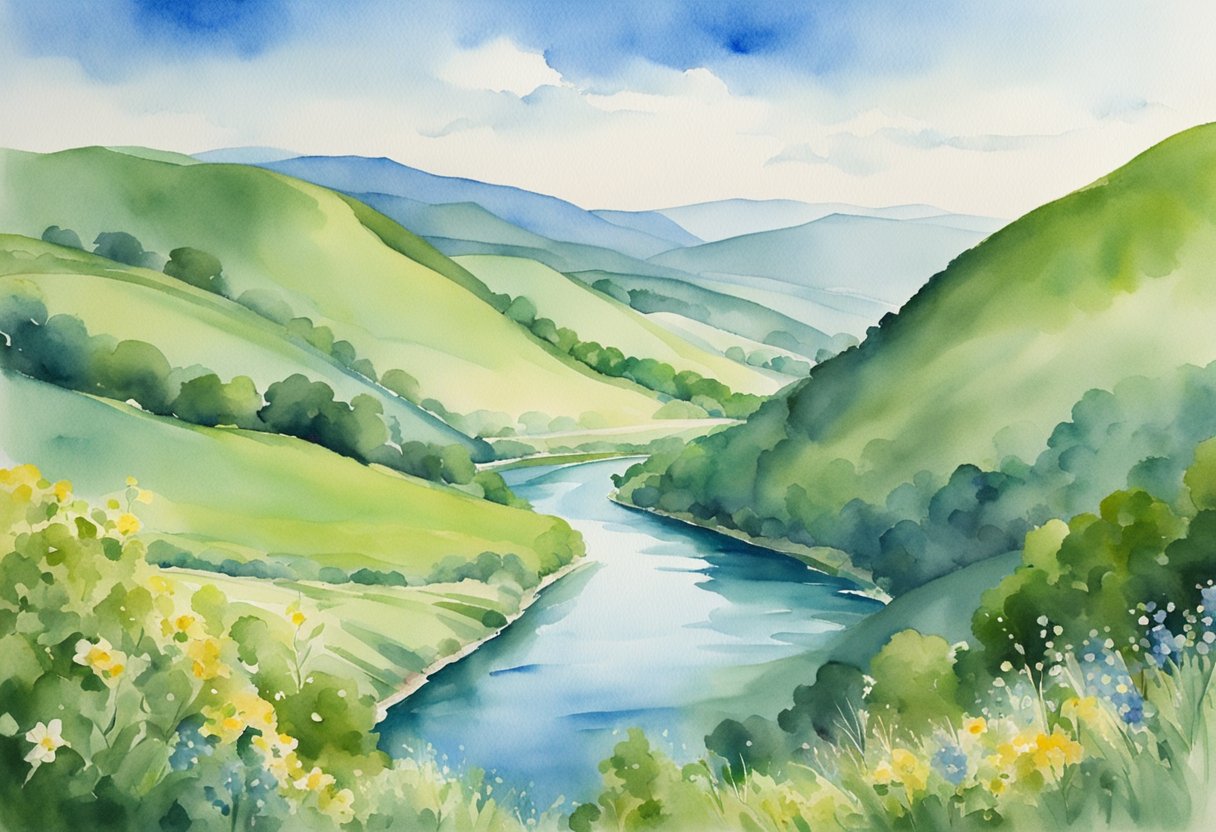
To create a landscape drawing, you need to have a good understanding of the natural elements that make up the scene. This includes the sky, mountains, trees, water, and any other natural features that are present. You also need to be familiar with the man-made elements that may be present, such as buildings, bridges, or roads. Once you have a good understanding of these elements, you can begin to plan and execute your drawing.
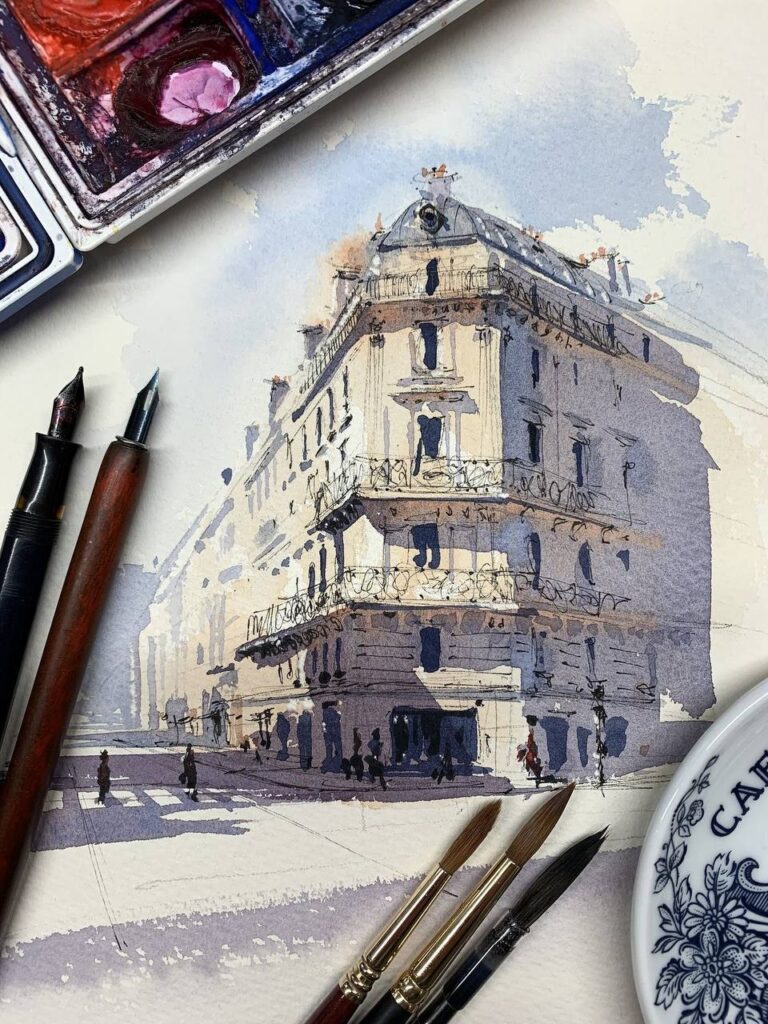
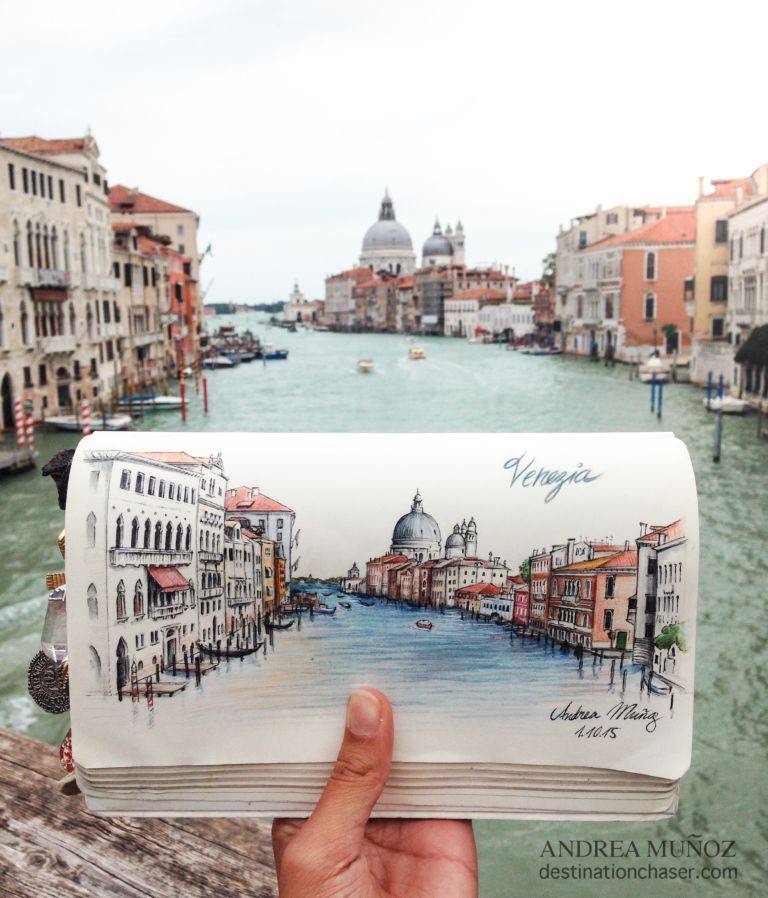
Creating a landscape drawing requires the right materials and techniques. You need to choose the right paper, pencils, and other tools to ensure that your drawing looks realistic and captures the essence of the scene. There are also various techniques that you can use to create depth and texture in your drawing, such as shading, cross-hatching, and stippling. With practice and patience, anyone can learn to create beautiful landscape drawings.
Key Takeaways
- Landscape drawings are a beautiful way to capture the essence of nature and bring it to life on paper.
- To create a landscape drawing, you need to have a good understanding of the natural and man-made elements present in the scene.
- Choosing the right materials and techniques is essential to create a realistic and beautiful landscape drawing.
Understanding Landscape Drawings
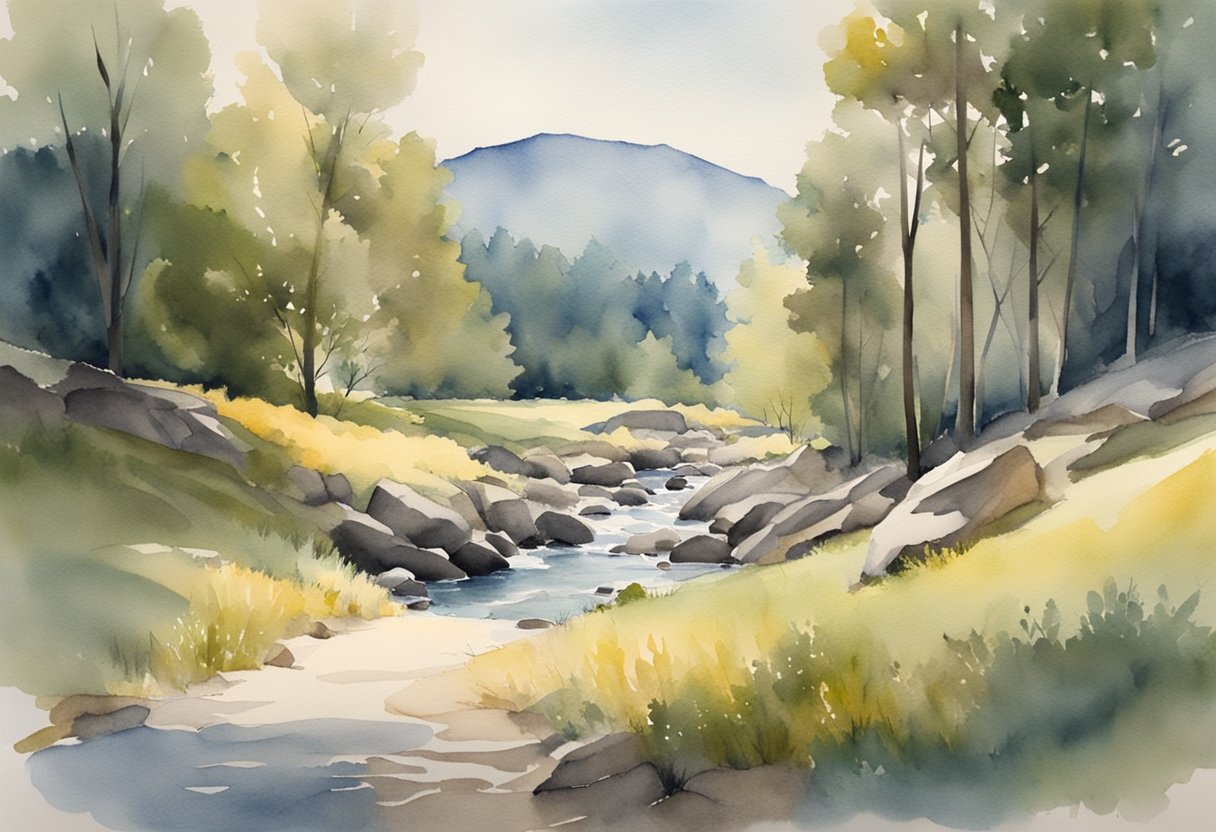
Landscape drawing is an art form that involves capturing the beauty of nature on paper. It is a popular subject matter for many artists, and it can be done in various dimensions, including two-dimensional and three-dimensional.
When drawing landscapes, it is essential to consider perspective and composition. Perspective is the technique used to create an illusion of depth and distance in a two-dimensional drawing. It involves understanding how objects appear smaller as they move farther away from the viewer. On the other hand, composition refers to the arrangement of elements in a drawing. It is crucial to create a balanced and harmonious composition to make the drawing visually appealing.
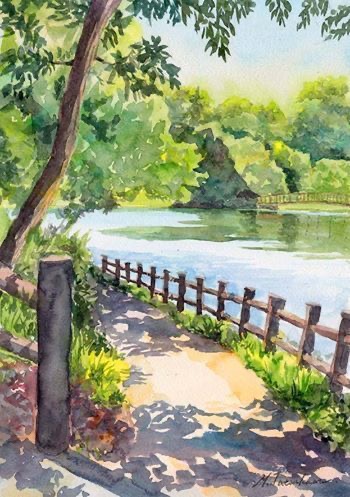
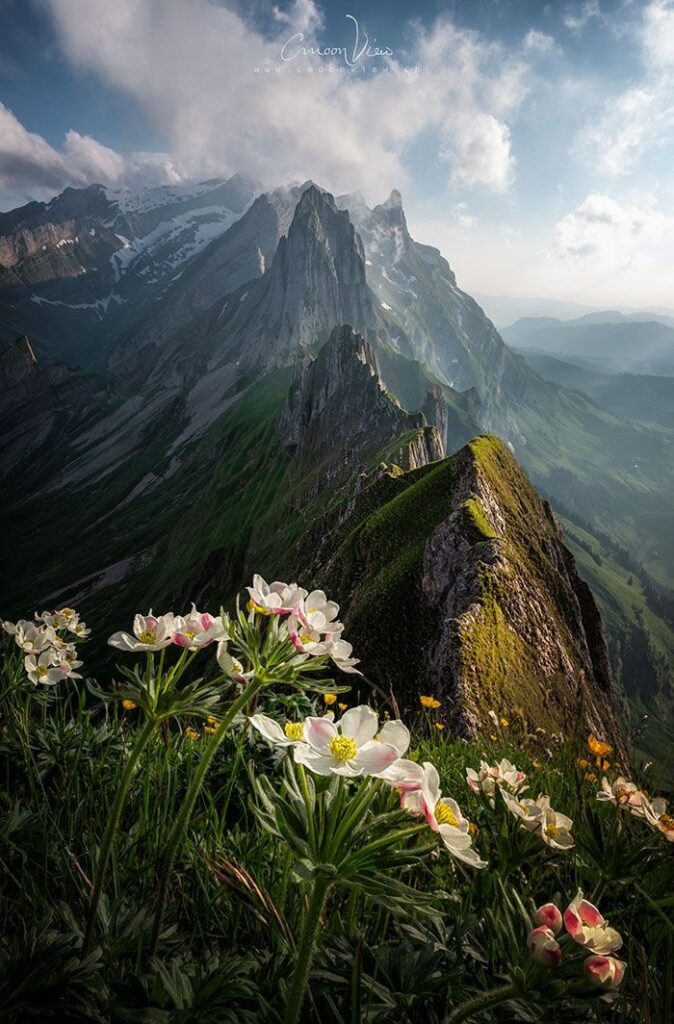
Accurate measurements are also essential when drawing landscapes. It helps to create a realistic and believable image of the natural environment. To achieve this, artists use a range of materials, including pencils, charcoal, paints, and more.
To draw landscapes effectively, artists need to have a deep understanding of the natural environment. They need to observe and study the different elements that make up the landscape, including mountains, trees, water bodies, and more. This knowledge helps to create a realistic and detailed drawing.
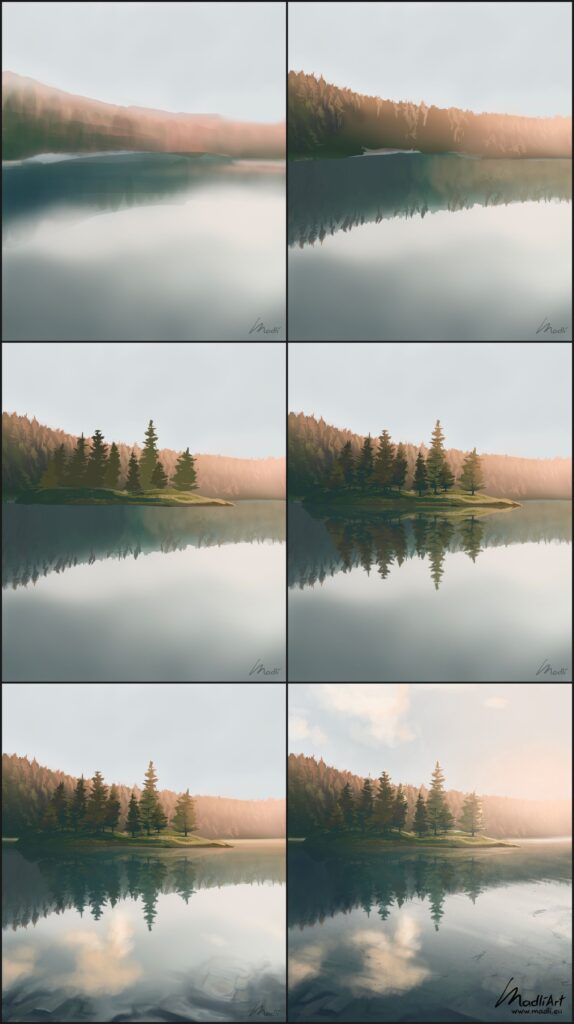
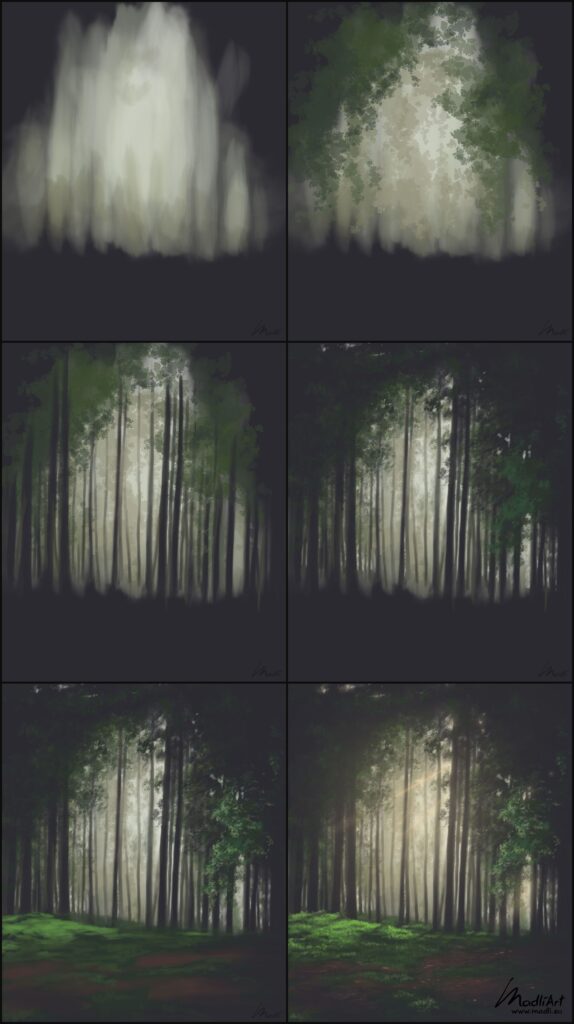
In conclusion, landscape drawing is a beautiful art form that requires skill, knowledge, and patience. To create stunning landscape drawings, artists need to consider perspective, composition, and accurate measurements. They also need to have a deep understanding of the natural environment and use a range of materials to bring their vision to life.
Materials for Landscape Drawings
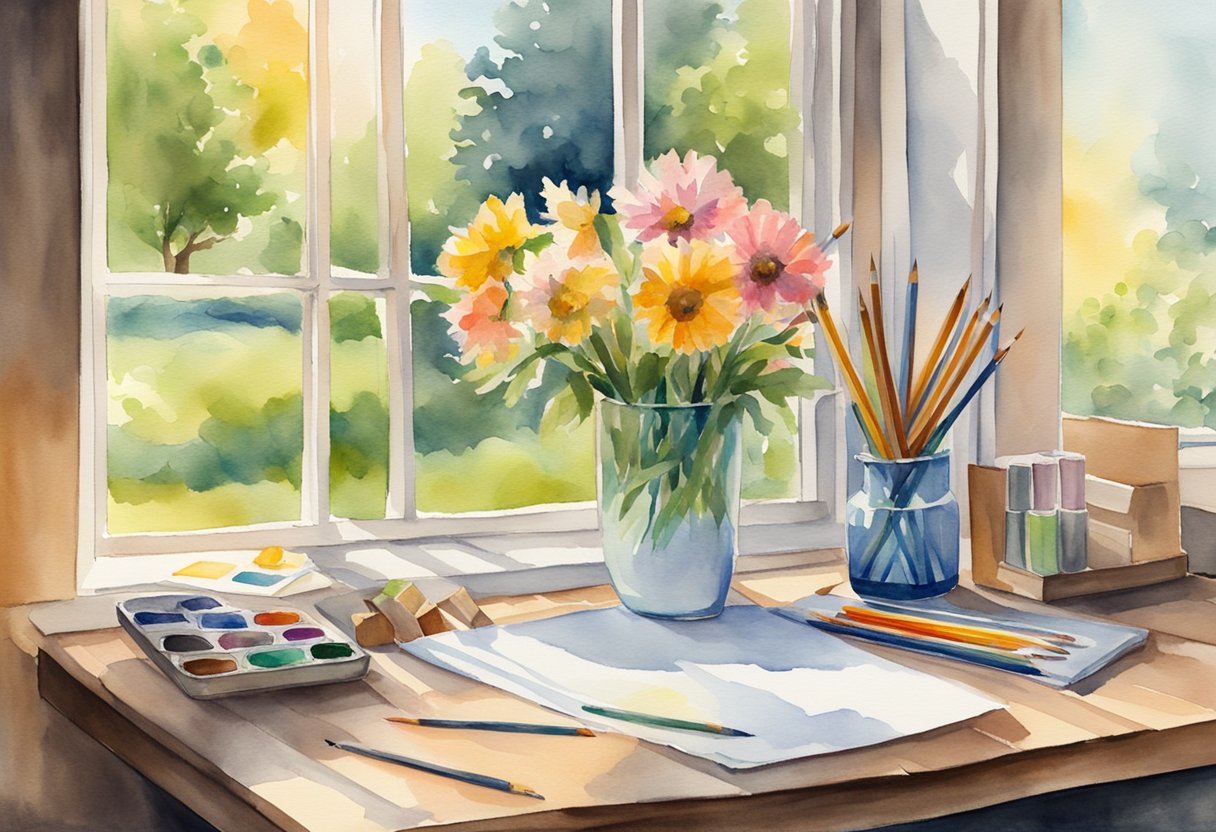
When it comes to creating landscape drawings, the right materials can make all the difference. Here are some of the essential materials that artists should consider when drawing landscapes:
Pencils and Paper
Pencils and paper are the most basic materials for drawing, and they are a great place to start for beginners.
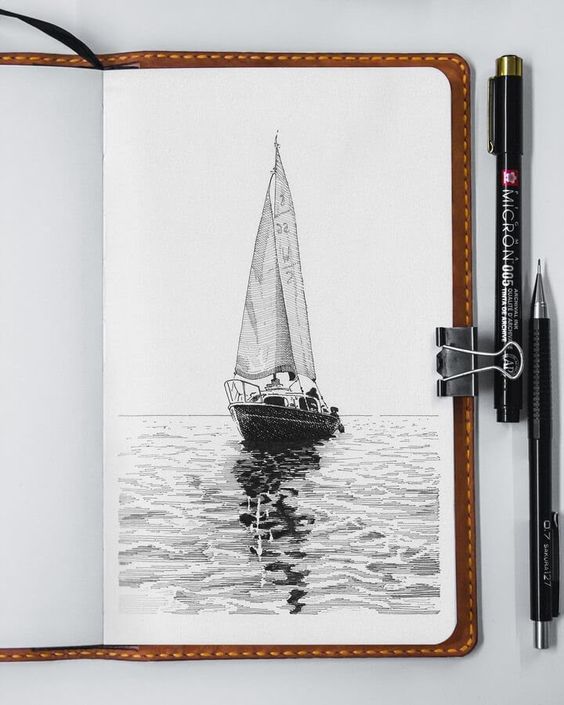
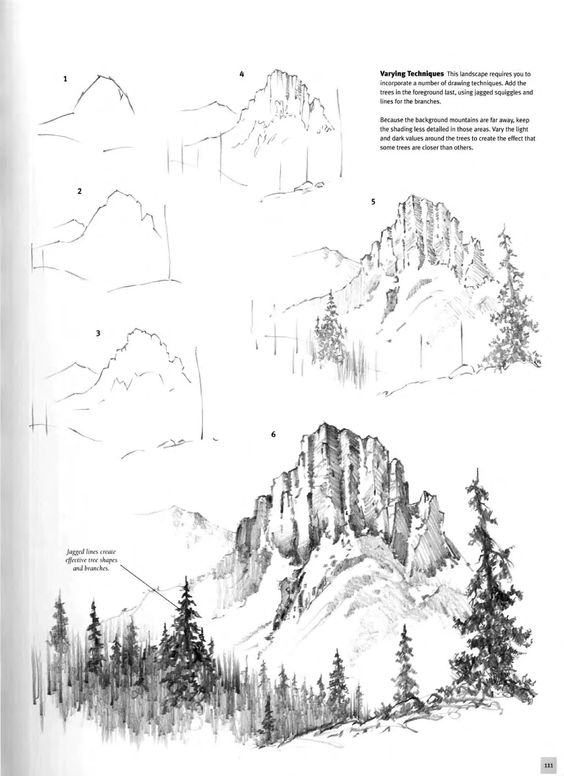
A range of graphite pencils of varying hardness can be used to create different shades and textures. For paper, artists should choose a high-quality drawing paper with a smooth surface to ensure that the pencil lines are clear and crisp.
Ink Pens
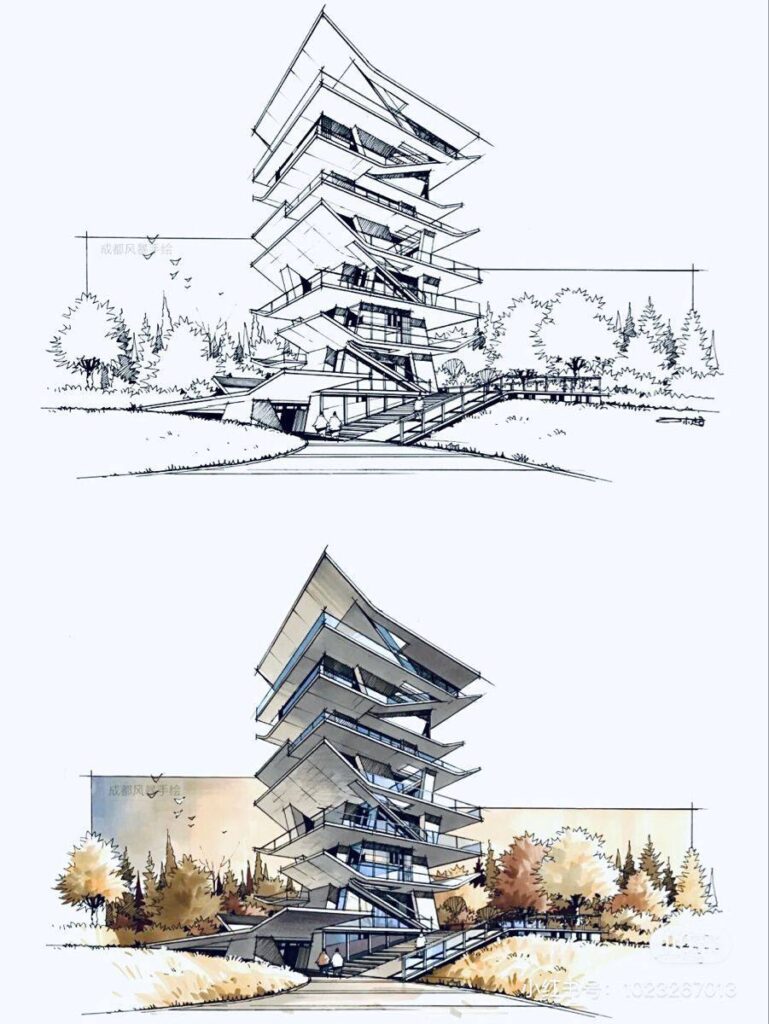
Ink pens are another popular choice for landscape drawings. They come in a variety of nib sizes, from fine to broad, and can be used to create bold lines and detailed textures. Some artists prefer to use waterproof ink pens, which are ideal for adding watercolor washes to the drawing.
Colored Pencils
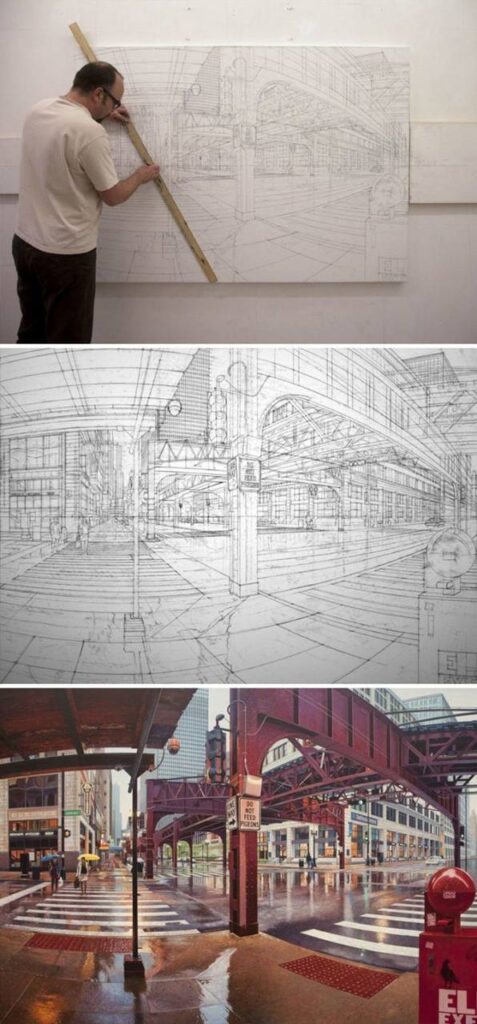
Colored pencils are excellent for adding color and depth to landscape drawings. They come in a range of colors and can be blended together to create a wide variety of shades and tones. Artists should choose high-quality colored pencils that are lightfast and have a creamy texture.
Markers
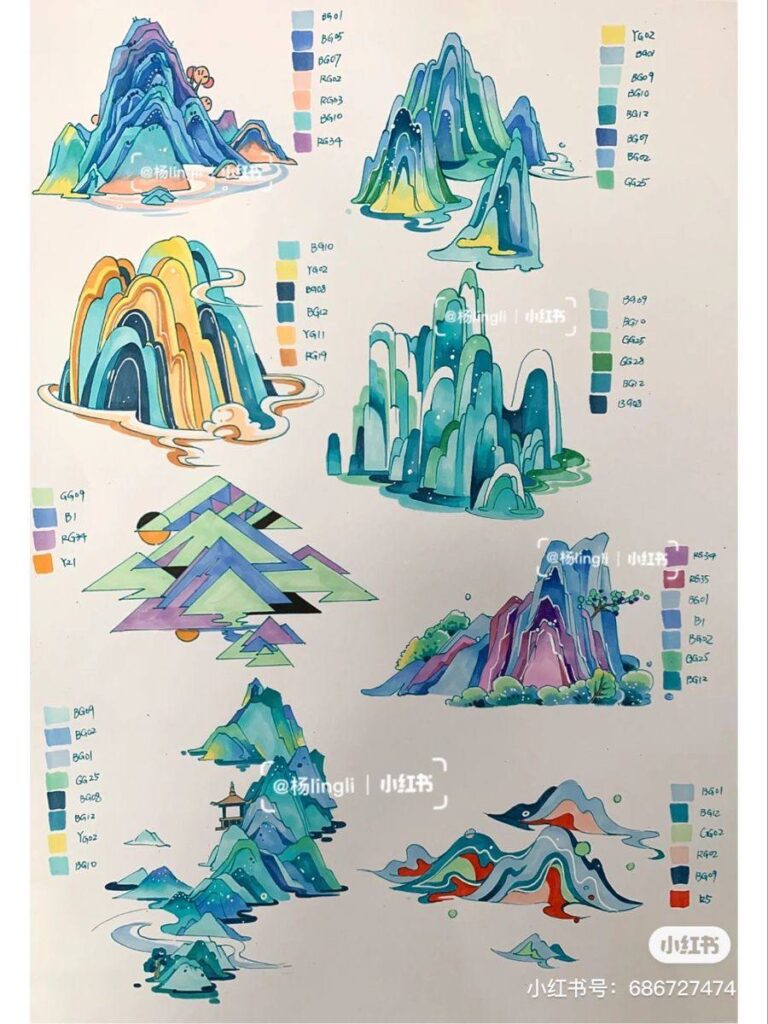
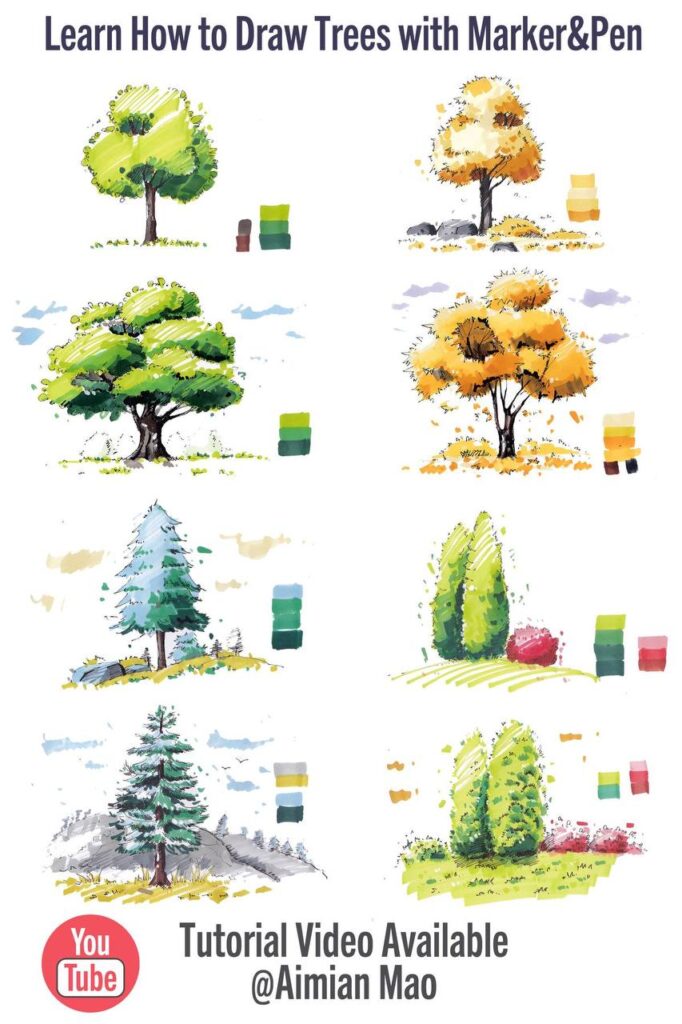
Markers are another great option for adding color to landscape drawings. They come in a range of colors and can be used to create bold, vibrant lines. Artists should choose alcohol-based markers, which are waterproof and blendable.
Paint
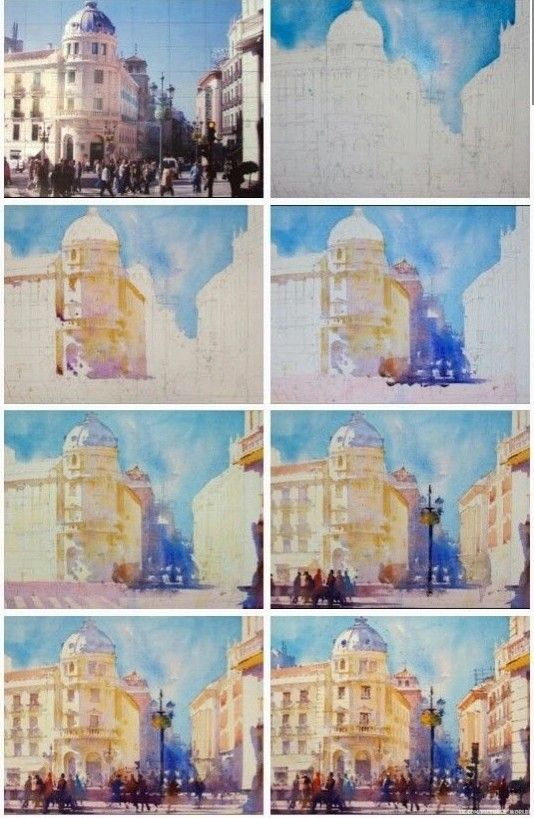

Paint is a versatile medium that can be used to create a range of effects in landscape drawings. Watercolor paints are ideal for creating soft, subtle washes of color, while acrylic paints are better suited for creating bold, textured effects. Artists should choose high-quality paints that are lightfast and have a smooth consistency.
Canvas
Canvas is a popular surface for painting landscape drawings. It comes in a range of sizes and can be stretched over a wooden frame or mounted on a board. Artists should choose a high-quality canvas that is primed and ready to paint on.
Eraser and Sharpener
Eraser and sharpener are important tools for any artist. An eraser can be used to remove unwanted pencil or ink lines, while a sharpener can be used to keep pencils and colored pencils sharp and ready to use. Artists should choose a high-quality eraser and sharpener that are durable and easy to use.
In conclusion, choosing the right materials for landscape drawings is essential for creating high-quality artwork. Whether using pencils and paper, ink pens, colored pencils, markers, paint, or canvas, artists should choose high-quality materials that are suited to their style and preferences.
Drawing Natural Elements

When it comes to landscape drawing, natural elements such as trees, water, mountains, and sky are crucial in creating a realistic and captivating scene. Drawing these elements requires attention to detail and a good understanding of their properties.
Trees are an essential part of any landscape drawing. They come in different shapes, sizes, and colors, and their leaves and branches can add depth and texture to your drawing. When drawing trees, it’s important to pay attention to their structure and the way they interact with the surrounding environment.
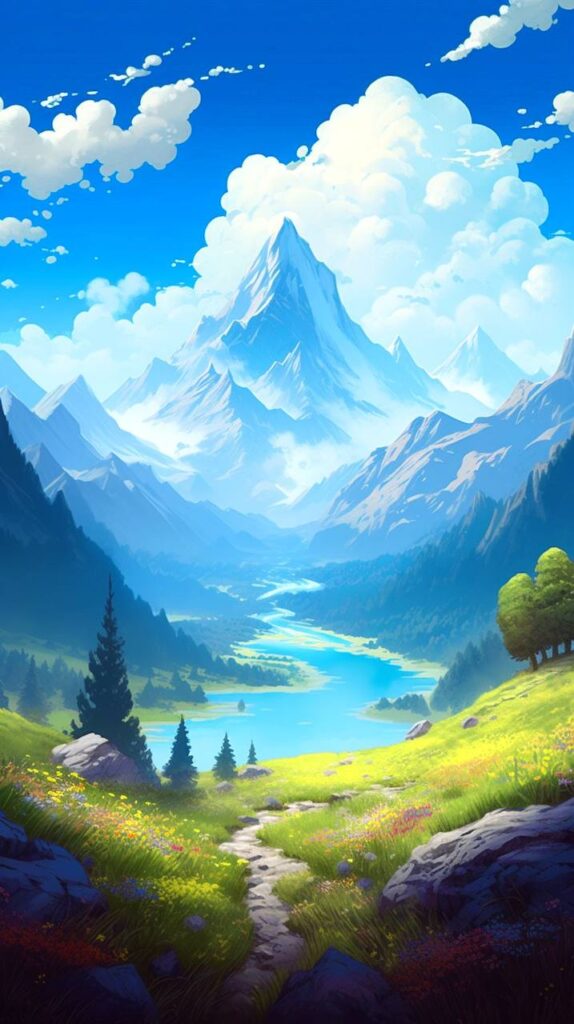

Water is another natural element that can add a lot of interest to your landscape drawing. Whether it’s a calm lake, a flowing river, or a crashing wave, water can create movement and reflection that can add drama and realism to your scene. When drawing water, pay attention to the way it interacts with the surrounding elements, such as rocks or trees.
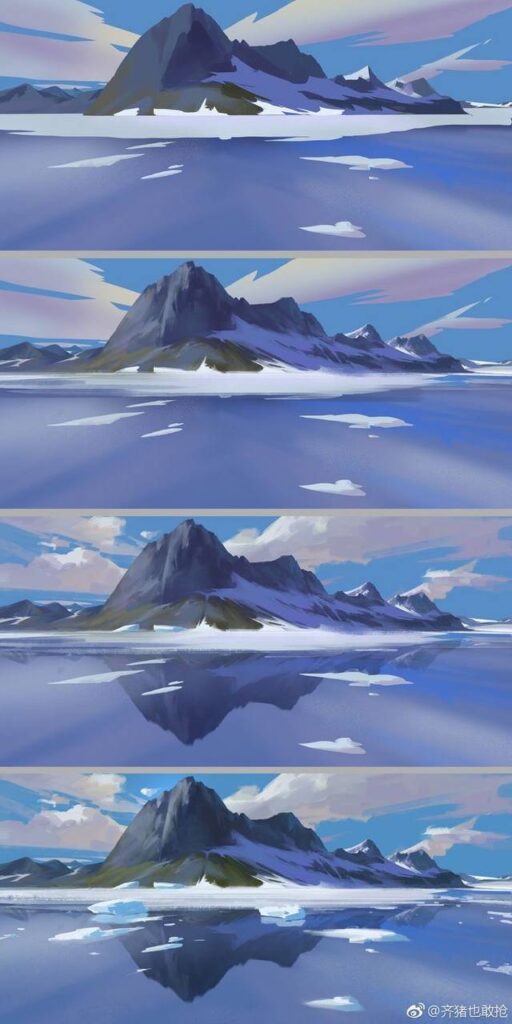
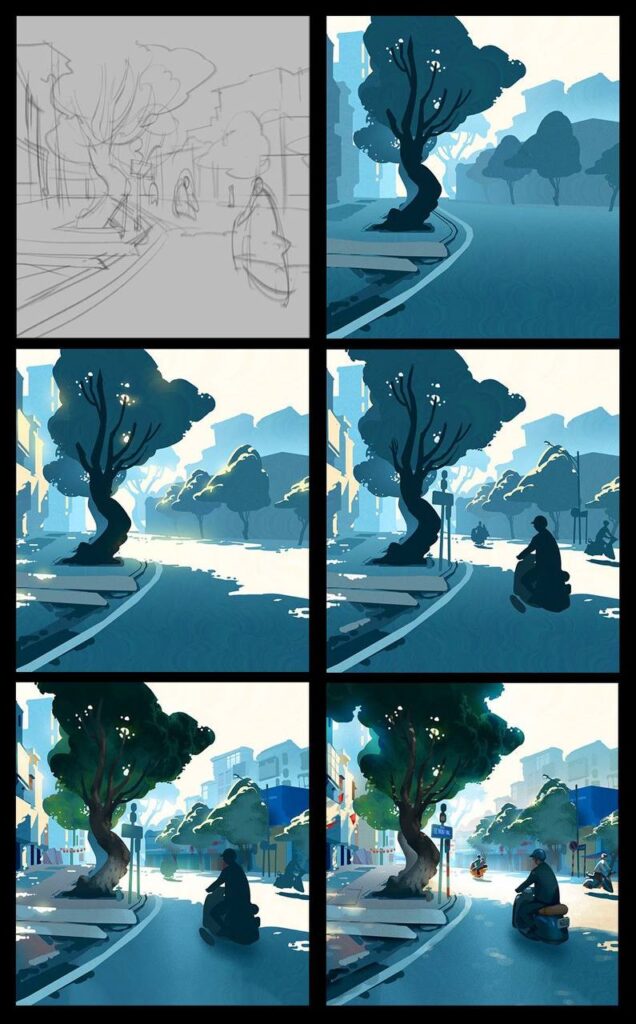
Mountains are a popular subject for landscape drawing, and for a good reason. They can create a sense of grandeur and majesty that can be awe-inspiring. When drawing mountains, it’s important to pay attention to their shape and texture, as well as the way they interact with the sky and the surrounding landscape.
The sky and the sun are also important elements in landscape drawing. The sky can set the mood for your scene, whether it’s a clear blue sky or a stormy one. The sun can create shadows and highlights that can add depth and interest to your drawing.
Shrubs, bushes, and grass are also important natural elements that can add texture and depth to your landscape drawing. They can create a sense of scale and distance, as well as add color and interest to your scene.
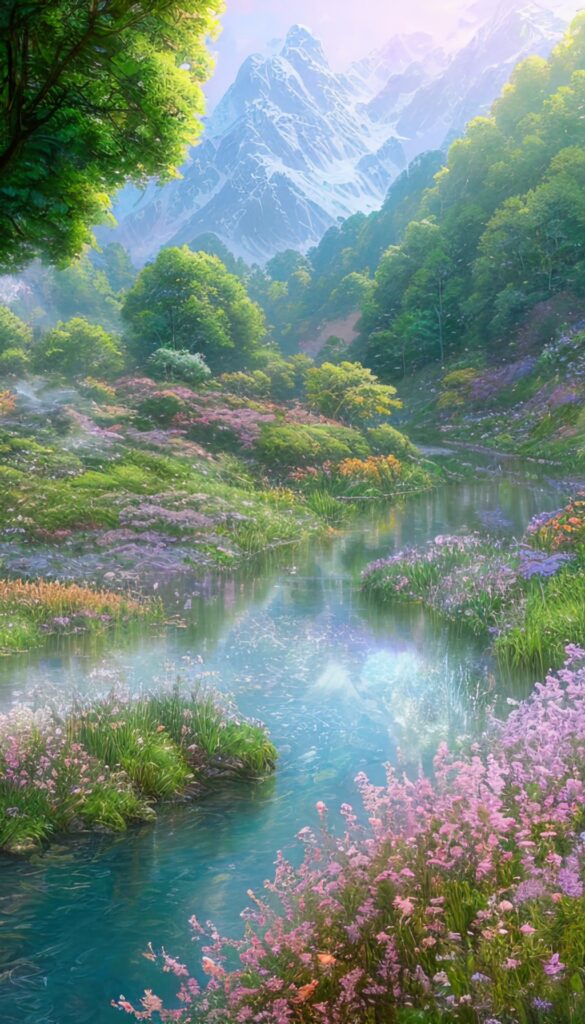
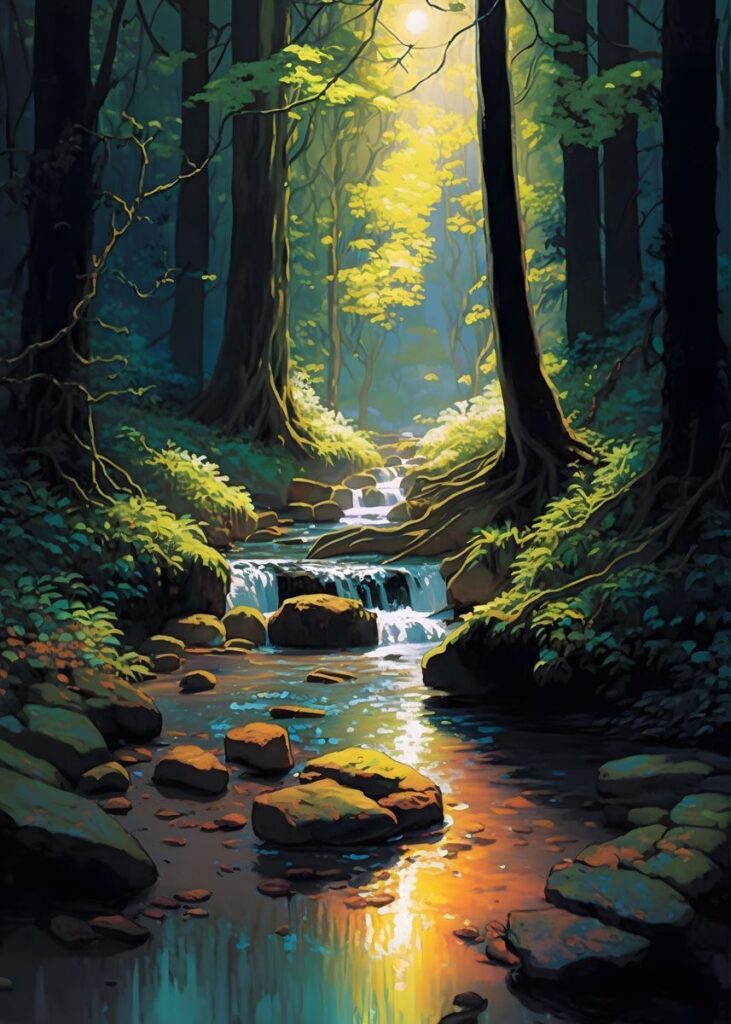
Clouds and rocks can also add interest and drama to your landscape drawing. Clouds can create shadows and highlights, and their shapes and formations can add movement and texture to your scene. Rocks can create interesting shapes and textures, and they can also add a sense of solidity and permanence to your drawing.
Whether you’re drawing a beach landscape, a mountain landscape, or a winter landscape, paying attention to natural elements can help you create a realistic and captivating scene. By understanding the properties and characteristics of these elements, you can create a drawing that is both beautiful and believable.
Drawing Man-Made Elements
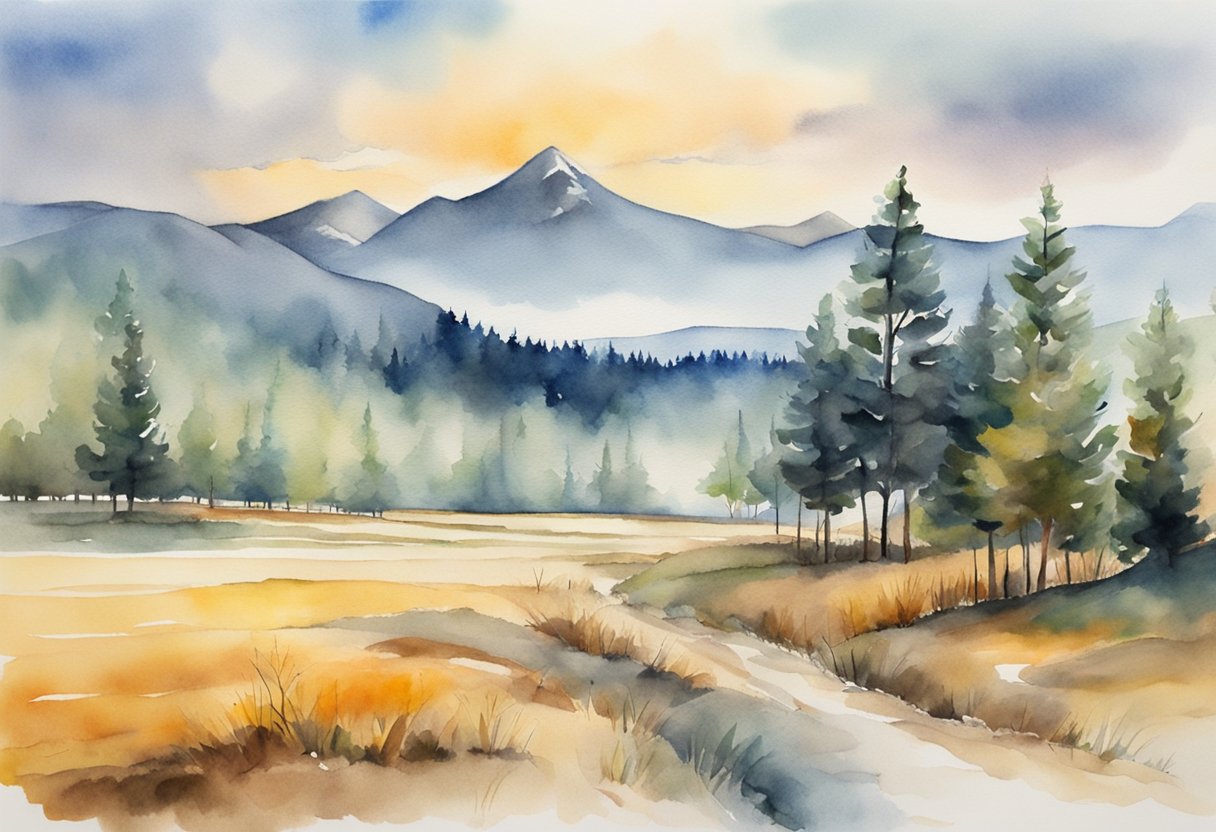
When drawing landscapes, it is important to consider the inclusion of man-made elements such as buildings, cityscapes, and houses. These elements can add depth and interest to a landscape drawing, and can help to create a more realistic and relatable scene.
When drawing man-made elements, it is important to pay attention to perspective. Buildings should be drawn with parallel sides to create a sense of stability and accuracy. It is also important to consider the size and scale of the man-made elements in relation to the natural elements in the scene.
To draw buildings, it can be helpful to break them down into basic shapes and then add details. For example, a rectangular building may be drawn as a rectangle with smaller rectangles for windows and a triangle for the roof.

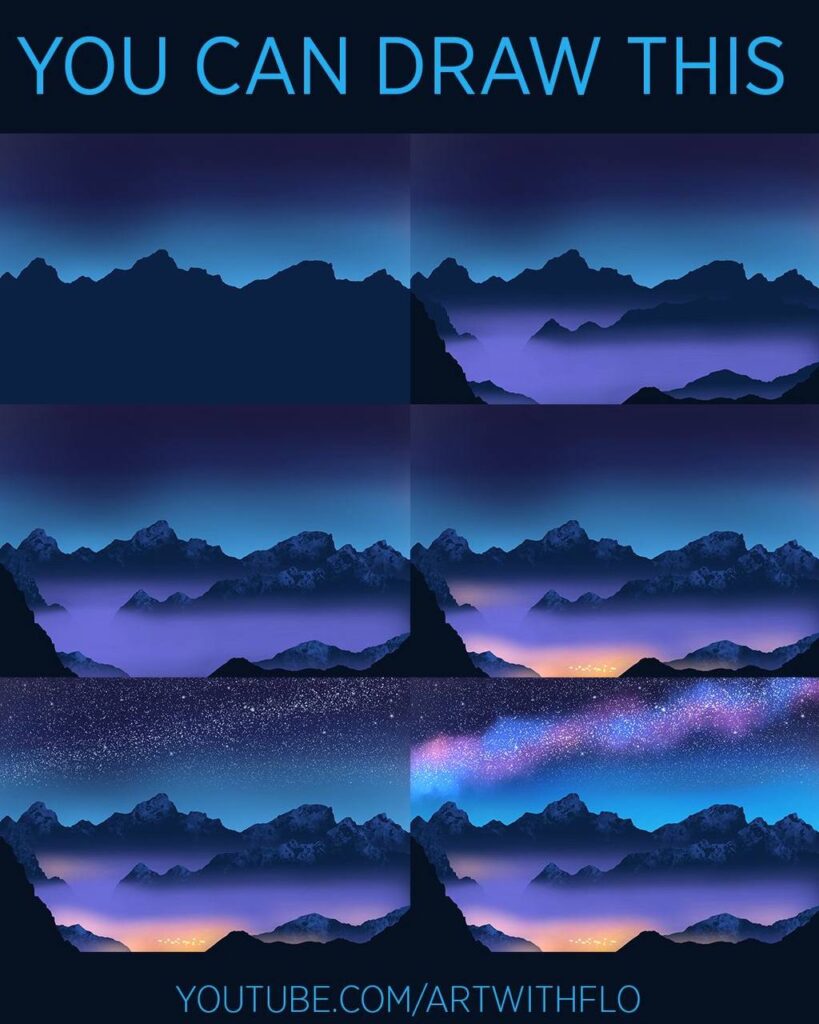
Cityscapes can be more complex, with multiple buildings and structures. It can be helpful to use reference photos or sketches to accurately capture the layout and details of the cityscape.
When drawing houses, it is important to consider the style and architecture of the house. Different styles of houses may have different shapes and features, such as sloping roofs or decorative elements.
Overall, the inclusion of man-made elements in a landscape drawing can add interest and complexity to the scene. By paying attention to perspective, size, and scale, and using reference materials when necessary, artists can create realistic and engaging landscape drawings.
Techniques in Landscape Drawing
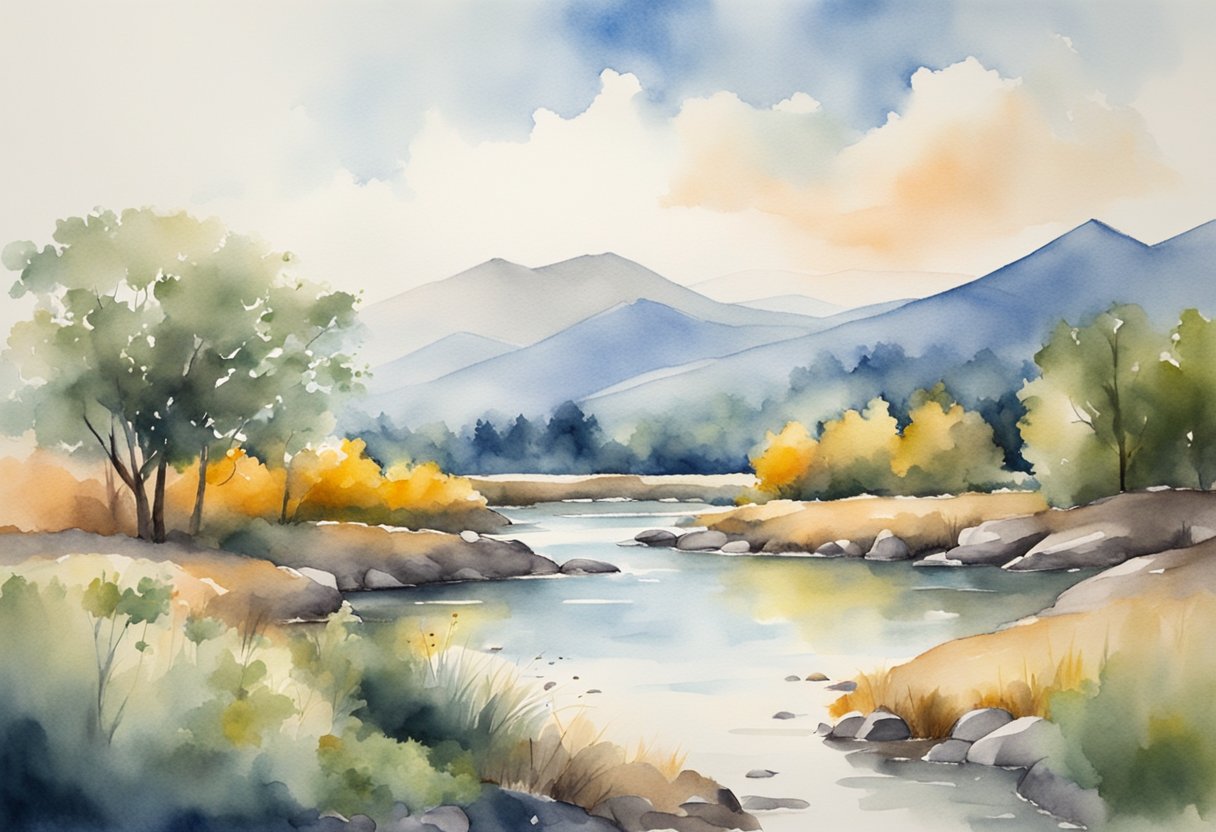
Drawing landscapes can be challenging, but with the right techniques, anyone can create compelling and realistic drawings. In this section, we will discuss some of the essential techniques for landscape drawing.
Sketching and Drawing Skills
Sketching and drawing skills are crucial for creating realistic landscapes. It is essential to have a good understanding of proportion, accurate measurement, and depth to accurately represent the scene. Sketching is also an important part of the process, as it allows the artist to experiment with composition and capture the essence of the landscape.
Color and Texture
Color and texture are important elements of landscape drawing. The use of color can create mood and atmosphere, while texture can add depth and realism to the drawing. It is important to observe the landscape and use the appropriate colors and textures to accurately represent the scene.
Shading
Shading is an essential technique for creating depth and dimension in landscape drawings. By using light and dark tones, the artist can create the illusion of form and volume. It is important to observe the direction of light and shade in the landscape and apply it to the drawing.
Angular Shapes
Angular shapes are an important element of landscape drawing. By using angular shapes, the artist can create a sense of movement and energy in the drawing. It is important to observe the angles and shapes in the landscape and use them to create a dynamic composition.
Realism
Realism is the ultimate goal of landscape drawing. By accurately representing the scene, the artist can create a sense of immersion for the viewer. It is important to observe the landscape carefully and use the appropriate techniques to create a realistic drawing.
In conclusion, landscape drawing requires a combination of sketching and drawing skills, color and texture, shading, angular shapes, and realism. By mastering these techniques, anyone can create compelling and realistic landscape drawings.
Practicing Landscape Drawings
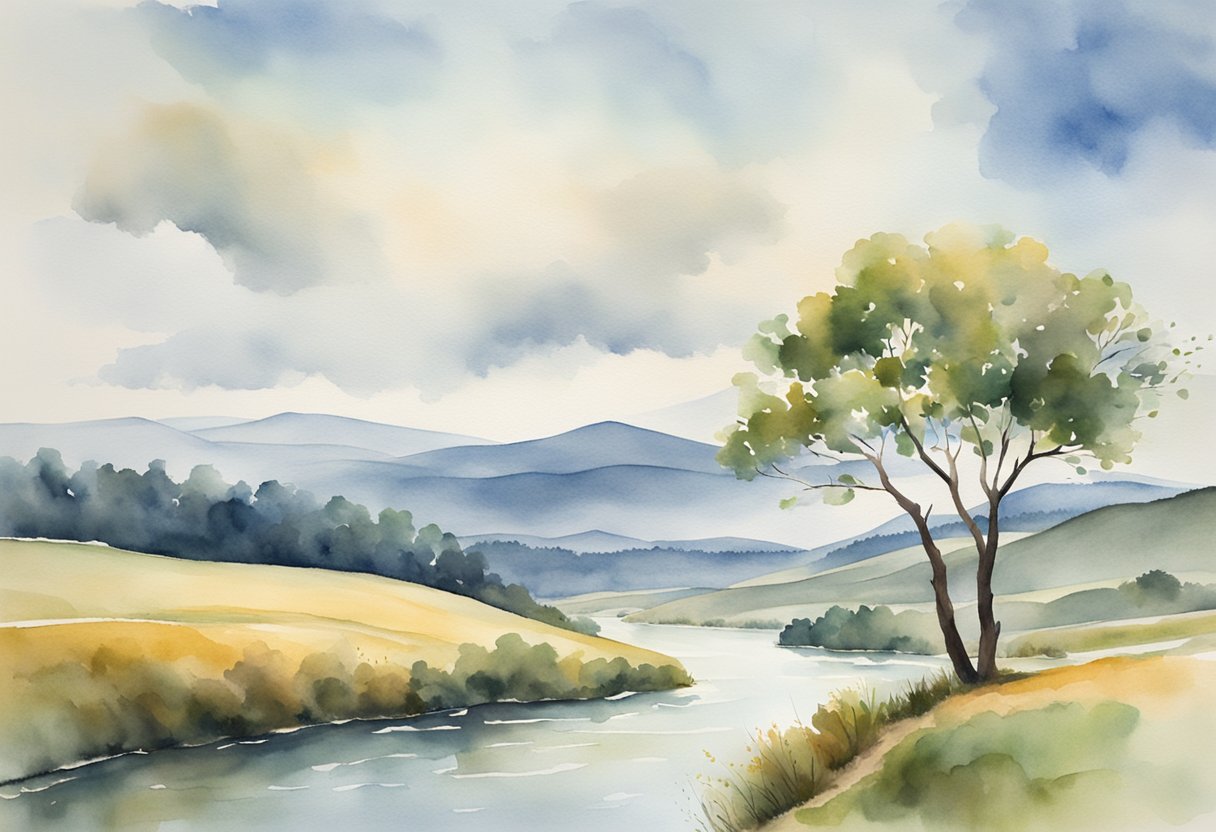
Drawing landscapes can be a challenging but rewarding experience for any artist. To improve your skills and create more compelling and realistic drawings, it is essential to practice regularly. Here are some tips and techniques to help you practice landscape drawings effectively:
Use a Sketchbook
A sketchbook is an essential tool for any artist looking to improve their skills. It allows you to practice your drawing skills anywhere, anytime, and capture your ideas and observations. Using a sketchbook to draw landscapes will help you develop your skills and build your confidence.
Draw Sketches from Photos

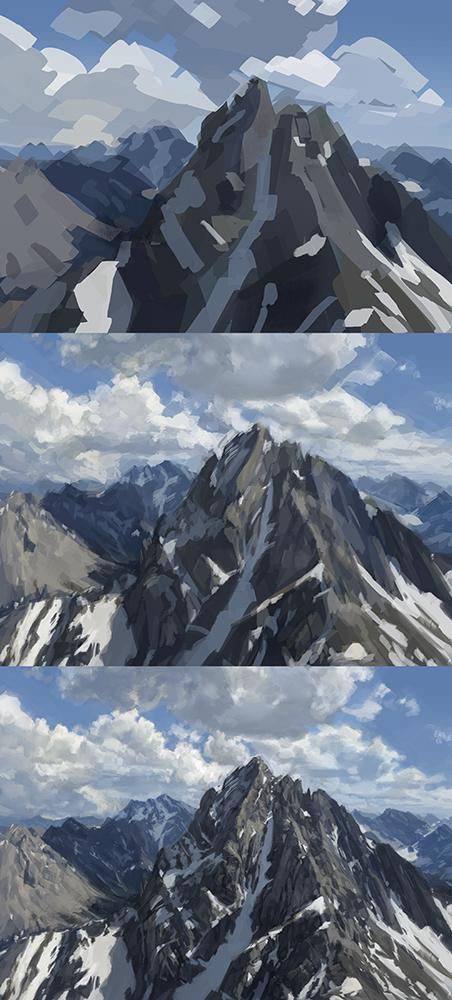
Drawing sketches from photos can be an excellent way to practice your landscape drawing skills. It allows you to study the composition, lighting, and other elements of a landscape without having to be on location. When drawing from photos, it is essential to use high-quality images and pay attention to the details.
Experiment with Different Mediums
Experimenting with different mediums can help you develop your skills and find your style. Try using pencils, charcoal, ink, or watercolors to create different effects and textures. Each medium has its unique qualities, and practicing with them will help you understand how to use them to your advantage.
Learn from Other Artists
Learning from other artists can be an excellent way to improve your skills and gain inspiration. Joining online communities or attending workshops can help you connect with other artists and learn from their experiences. You can also read books or watch videos from artists to gain insights into their techniques and approaches.
Practice Consistently
Consistency is key when it comes to improving your landscape drawing skills. Try to set aside a regular time to practice and stick to it. Even if you only have a few minutes a day, practicing consistently will help you develop your skills over time.
By following these tips and techniques, you can practice landscape drawings more effectively and improve your skills as a painter. Whether you’re a beginner or an experienced artist, practicing regularly is the key to success.
Landscape Design and Planning

Landscape design and planning involve the creation of a blueprint for your outdoor space. It is an essential step before any landscaping work can begin. A landscape plan is a visual representation of your property that includes all the details of your outdoor living space.
A stakeout is often necessary for landscape design and planning. A stakeout is the process of marking the exact location of the proposed landscape features. It ensures that everything will be in the right place before any digging or construction begins.
Landscape designers and architects use a string or rope to outline the proposed features. They also consider the location of underground utilities and other potential obstacles to avoid any issues during the installation process.
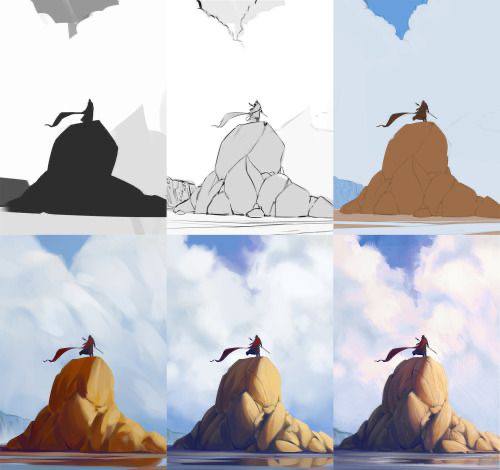
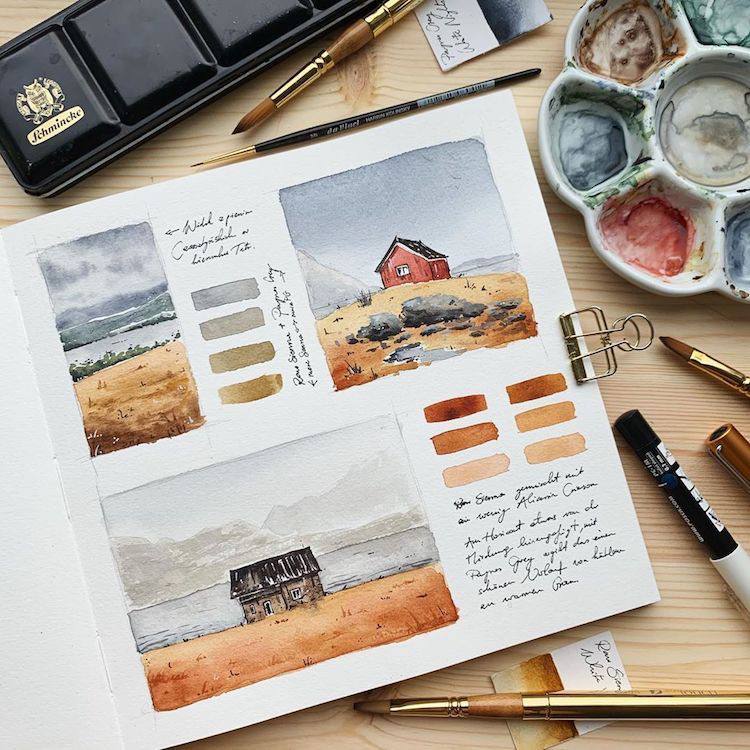
The planting plan is an essential component of landscape design and planning. It includes the selection and placement of plants, trees, and ground cover. A well-designed planting plan can enhance the beauty of your outdoor space and create a cohesive look.
The landscape plan also includes the design of hardscaping features such as patios, walkways, and play areas. These features can be designed to complement the natural elements of your outdoor space and provide functional areas for outdoor living.
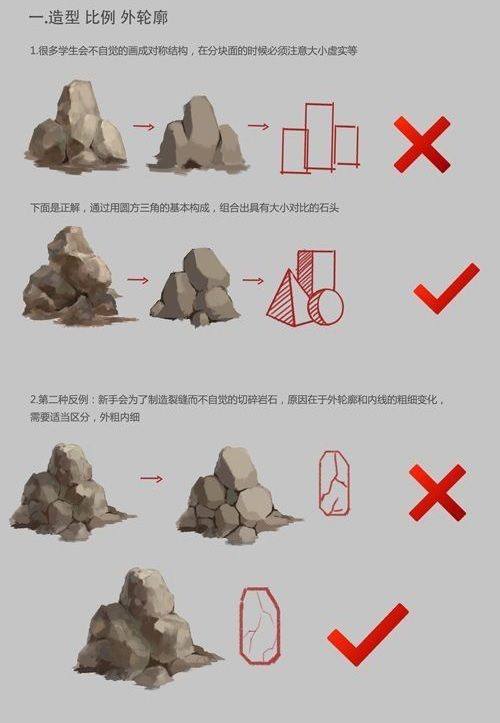
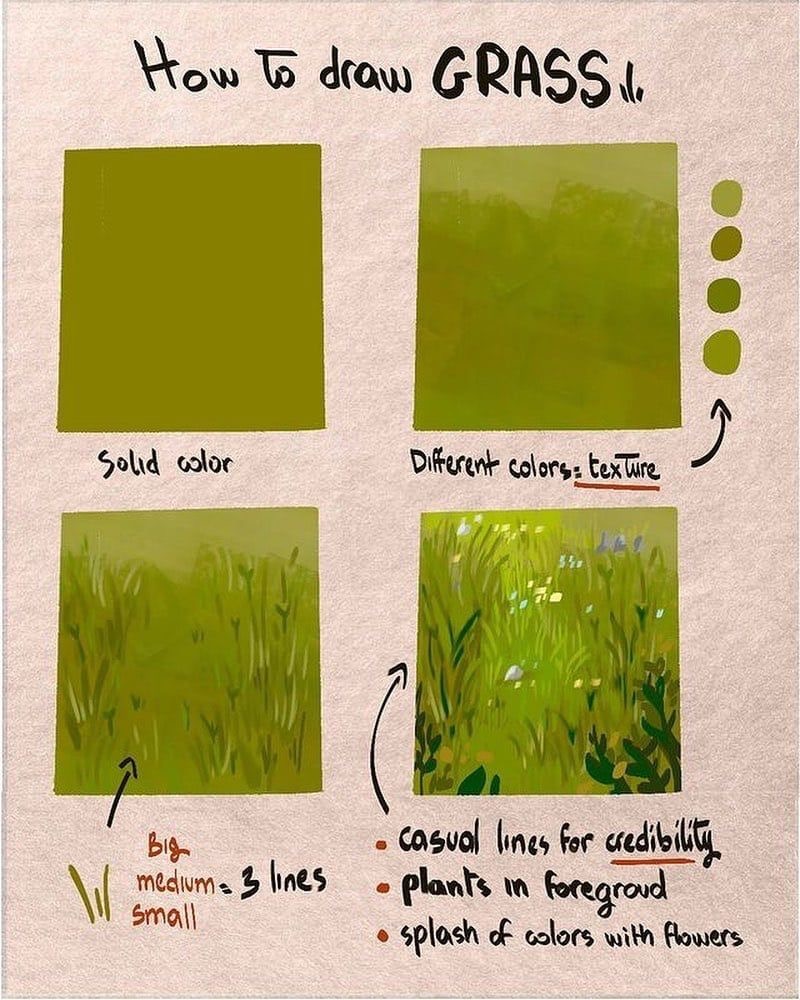
In conclusion, landscape design and planning are crucial steps in creating a beautiful and functional outdoor living space. It requires the expertise of landscape designers and architects to ensure that every detail is considered and executed correctly. A well-designed landscape plan can enhance the beauty and value of your property for years to come.
Tips for Beginners
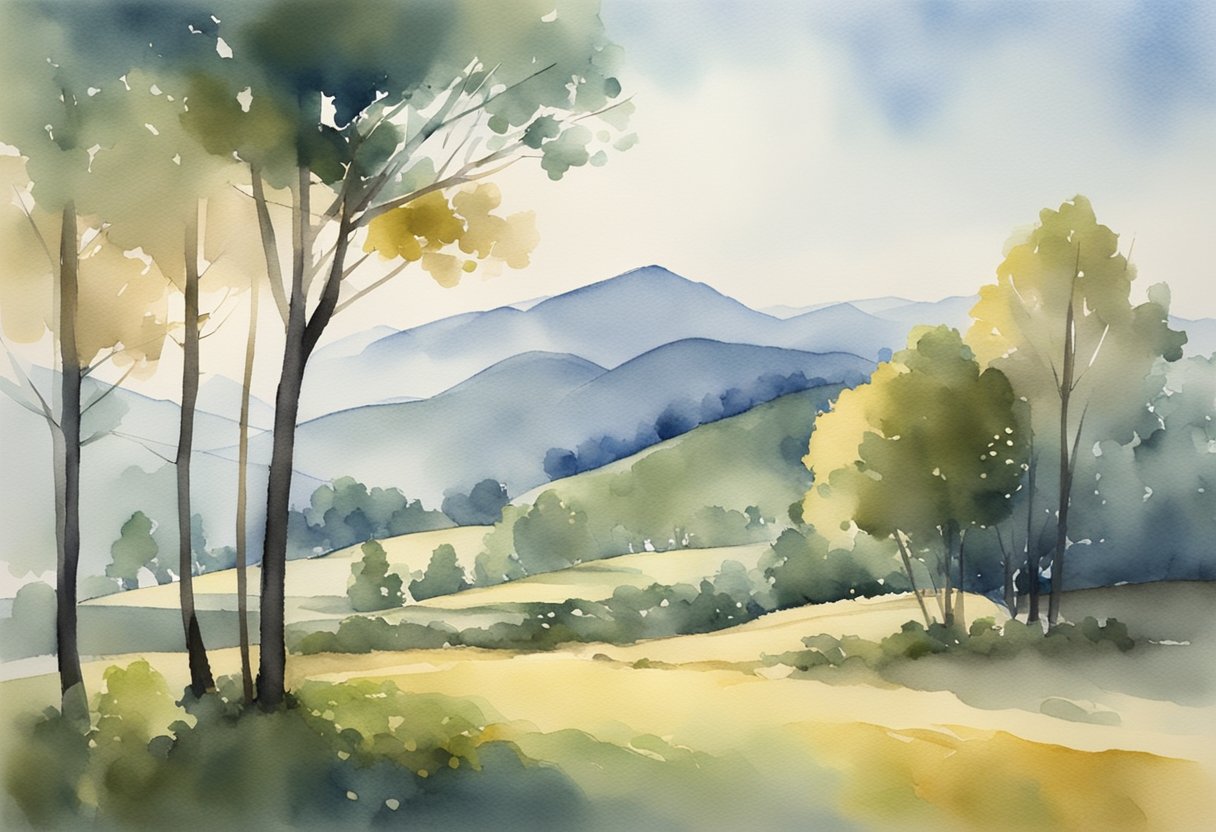
Drawing landscapes can be a rewarding and relaxing activity, but it can also be challenging for beginners. Here are some tips to help you get started:
-
Start with simple shapes: When you’re first learning how to draw landscapes, it’s best to start with simple shapes like squares, circles, and triangles. This will help you get a feel for the basic composition of a landscape and how to arrange the elements.
-
Measure your scene: Measuring your scene can help you get the proportions right and make sure everything fits together. Use a tape measure to measure the distance between objects and jot down your measurements.
-
Use a grid: If you’re struggling with proportions, using a grid can be helpful. Draw a grid over your scene and use it as a guide to help you get the proportions right.
-
Practice shading: Shading is an important part of drawing landscapes, as it helps to create depth and dimension. Practice shading different objects and surfaces to get a feel for how light and shadow work.
-
Experiment with different techniques: There are many different techniques you can use when drawing landscapes, from pencil sketching to watercolors. Experiment with different techniques to find the ones that work best for you.
Remember, drawing landscapes takes practice and patience. Don’t be discouraged if your first few attempts don’t turn out the way you want them to. Keep practicing and experimenting, and you’ll soon be creating beautiful landscapes that you can be proud of.
- 7.6Kshares
- Facebook0
- Pinterest7.6K
- Twitter0


